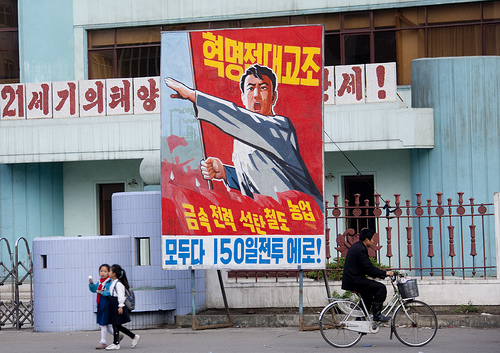Institute for Far Eastern Studies (IFES)
NK Brief No. 09-7-22-1
7/22/2009
According to a report released by the Korea Trade-Investment Promotion Agency (KOTRA), mineral products again topped the list of DPRK exports, accounting for 41.3 percent of goods sent out of the country last year. The KOTRA report, “2008 DPRK Trade Trends,” states that the North’s 2008 exports, totaling 1,130,213,000 dollars, increased by 23 percent over the 918.77 million USD-worth of goods exported in 2007.
With the exception of plastic and wooden goods, North Korean exports grew in all areas. Mineral products accounted for 41.3 percent; non-ferrous minerals made up 16.8 percent, textiles accounted for 10.6 percent; chemical plastics made up 7.6 percent; electrical and electronic machinery made up 7 percent; and animal products accounted for 3.6 percent.
Mineral goods were up 33.5 percent over last year, recording sales of 465.44 million USD. This sector has shown continuous growth over the last five years. In 2004, trade in these goods brought in 152.28 million USD; in 2005, 243.66 million USD; in 2006, 244.43 million USD; and in 2007, 349.58 million USD.
Since 2003, North Korea has concentrated on invigorating the light-industrial sector, and has emphasized the export of manufactured goods. However, last year, exports of mineral products and non-ferrous minerals combined to make up a total of 58.1 percent of all exports; the North has been unable to restructure its export sector or satisfactorily boost light-industrial manufacturing.
North Korea’s imports grew as well, to more than twice that of exports. Bringing in goods worth 2,685,478,000 USD, imports grew by 32 percent over the 2.023 billion in imports during 2007. In 2008, mineral products accounted for 25.9 percent of imports; fibers accounted for 11.9 percent; electrical and electronic machinery, 11.5 percent; processed food items, 8.8 percent; chemical and heavy industrial goods, 7.5 percent; and non-ferrous minerals, 6.6 percent. Import of fibers, processed food, and mineral products grew, while the import of animal products, vegetable products and automobiles fell.
Crude petroleum, the North’s largest import item, was imported exclusively from China, and was up 46.9 percent (414.31 million USD) over 2007 (281.97 million USD). However, due to the loss of other sources of fuel, overall imports of crude grew by a mere 1 percent.
Import of grains fell in 2008, recording only 86.24 million USD – a fall of 25.6 percent from the 115.86 million USD in grain imports during 2007. KOTRA explains that due to instability in the grain market, imports from China of rice and barley were halted in April, while corn imports were halted in August.
(Note: Here is the KOTRA web page. It is not a user-friendly site and I was unable to find the report in English.)

